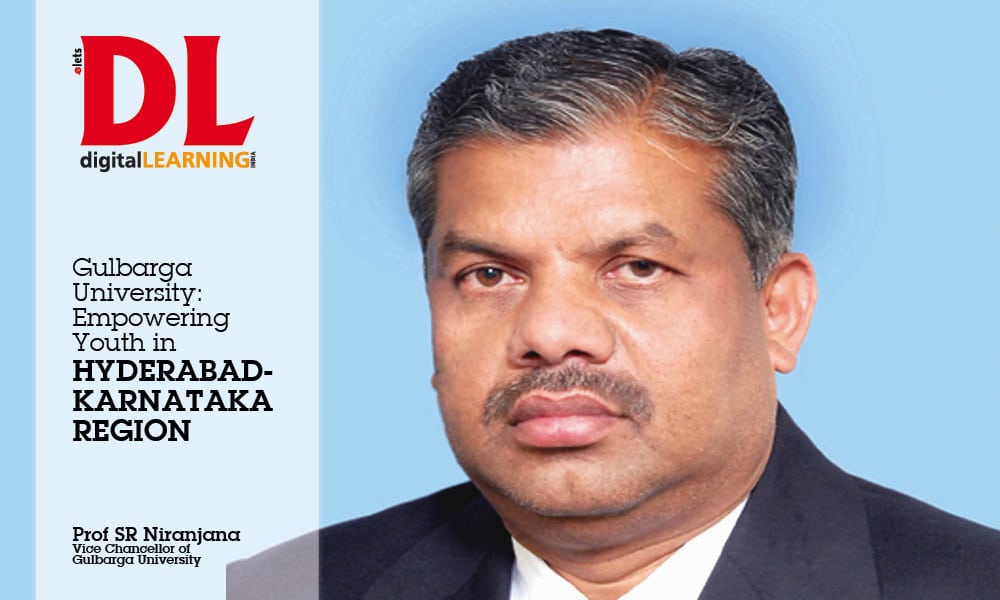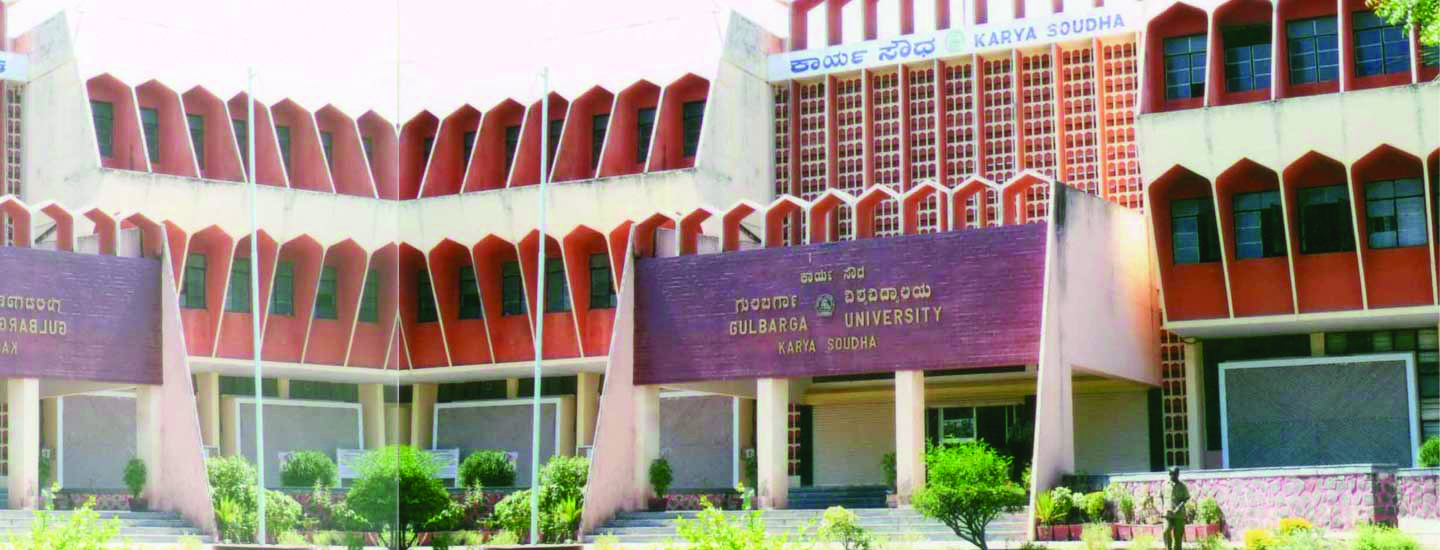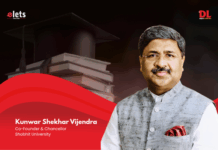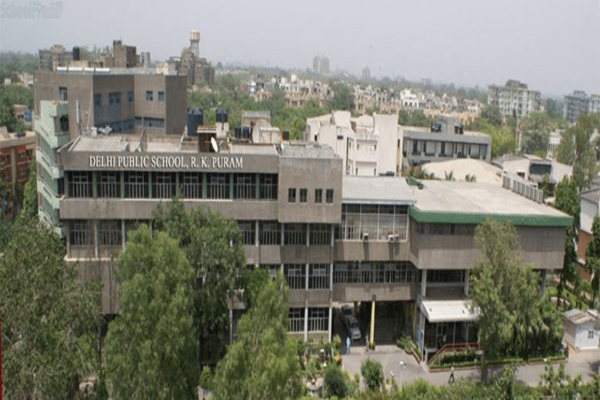
Looked upon as an oasis of knowledge, wisdom, and learning, research, and extension in an otherwise backward region of Hyderabad and Karnataka, Gulbarga University has emerged as a harbinger of positive social transformation and a vehicle of inclusive and sustainable growth. In an exclusive interview with T. Radhakrishna and Sudheer Goutham of Elets News Network (ENN), Prof SR Niranjana, Vice-Chancellor of Gulbarga University, shares the history of the University, challenges faced and vision for its students of the Hyderabad-Karnataka region
Kindly explain your vision for research at the University?
Firstly, we need to identify the thrust areas for research in the development of Hyderabad-Karnataka region. The main thrust areas include problems in dry land agriculture, renewable energy resources, gender sensitization, and studies in heritage-rich literature (Vachana Sahitya, Dasa Sahitya, etc), Interdisciplinary and joint research programmes among the cognate subjects for establishing the centres of potential excellence in research areas (Solar energy devices, bio-molecules from natural habitats, Ambedkar philosophy, etc) and revenue generation for research through national and international collaborations.
Mention the opportunities that you foresee for the University at the global stage?
We see many opportunities, like:
Extension of already existing collaborations with European Universities under Erasmus Mundus Action plan
Initiation of joint research degree programs with partner universities
Improving the faculty level research linkages into collaborative ventures with national and international funding agencies (UNESCO, Ford Foundation, Rockefeller Foundation, European Commission, etc)
Attracting students from SAARC and other Asian countries and NRI’s for some unique courses in the University (Sugar Technology, Psychology, Pali studies, Biotechnology, Music, etc).
 What do you consider to be the main challenges facing your University?
What do you consider to be the main challenges facing your University?
Gulbarga University is facing many challenges. Few of them are: v Severe shortage of teaching and non-teaching staff in contrast to the increase in students’ strength and number of colleges; v Majority of students enrolled are from low socio-economic and educational background, thus with low communication and competitive ability; v University jurisdiction consists of four districts viz., Bidar, Gulbarga, Raichur, and Yadagir, which have
Severe shortage of teaching and non-teaching staff in contrast to the increase in students’ strength and number of colleges
Majority of students enrolled are from low socio-economic and educational background, thus with low communication and competitive ability
University jurisdiction consists of four districts viz., Bidar, Gulbarga, Raichur, and Yadagir, which have remote or no access to major industrial and commercial activities and international linkages
The Hyderabad- Karnataka Region has a rich cultural heritage of Vachana Sahitya, Sufism, Buddhism and Dasa literature. The values and traditions inculcated by the people from a significant legacy in educational reforms. The University’s vision for the empowerment of the youth of this region will be based on the value-added education system, alongside the emerging areas of global importance
| GULBARGA UNIVERSITY: STATISTICS | |
| Year of Establishment: | September 10, 1980 |
| Number of Colleges affiliated to University | 333 |
| Number of programmes: | UG: 51; PG: 41 |
| No. of Students | UG: 70,209 PG: 3606 |
| Student-Faculty Ratio: | 1:30 |
| MHRD Rank: | NA |
| Accreditations: | Awaiting the result of NAAC 3 Cycle Assessment |
How would you like to build on the success of your University’s legacy?
The Hyderabad-Karnataka Region has a rich cultural heritage of Vachana Sahitya, Sufism, Buddhism and Dasa literature. The values and traditions inculcated by the people form a significant legacy in educational reforms. The university’s vision for the empowerment of the youth of this region will be based on the value aided education system along with emerging areas of global importance.
How would you like your Vice- Chancellorship to be viewed in seven years’ time?
I wish to view increasing Gross Enrolment Ratio (GER) of this backward area from present 16 to 25, on the back of skill-oriented education and entrepreneurship among the youths. The research and extension activities for the societal benefits with an excellent outcome of publications / patents /technical know-how and literature; Students with extraordinary achievements in the field of sports, visual arts, music and professional careers; Eco-friendly, green and energy selfsufficient university campus.
How do you continue to recruit and retain the very best staff?
Teaching and non-teaching staff will be recruited with objective and transparent selection process, and the best possible promotion benefits will be extended to retain the best talent
























